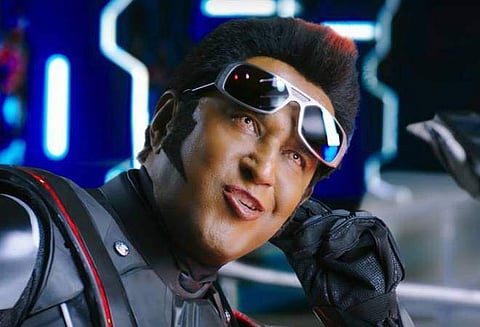

2.0, on many counts, has broken the standards for Indian film production. The promotions promised us a marvel that unfolds on screen but based on the vision of Indian minds. By and far, 2.0 fulfils that promise. The visuals are, at several points, breathtaking. But what makes it fascinating is that the ideas are so Indian and that mix, is intriguing. For example, Nila (Amy Jackson), a robot, is in love with Chitti, another robot (Rajinikanth).
But how do are we shown this? A soft breeze cradles her face, gently pushing her hair away -- a trope that is so 'us', but now envisioned with a robot. It is this infusion of our film culture and ethos into on-screen technology (Shankar is credited for ‘imagining the VFX sequences’) that makes 2.0 an entertaining watch.
The story has Shankar written all over it -- the fight against an establishment (in this case the term applies in a larger context), the socially responsible hero, and above all, the visual grandeur, it’s all there. It is what makes Shankar films theatre experiences and there can’t be a better example than 2.0. In fact, 2.0is a classic, commercial masala film v 2.0. One can argue that sci-fi is a modified version of our masala films, just that we are reined in with an explanation that throws science at us.
When long-winding terms and phrases are thrown at us, it feels authentic because you don’t know. While the film has its share of explanations, too many, they are dumbed down, to reach the masses I presume. Thus, it becomes more fantasy than fiction. But the on-screen opulence makes up for it. 2.0’s VFX has applaudable detail in the close-up shots -- one can almost see the dimension of the phones that mash into bigger forms and objects.
Rip off the visual grandeur and the film is lost. The frames demand to be seen on a humongous screen, and if possible in 3D. You get to see a sci-fi version of Rajinikanth’s introduction card in 3D (It was cooler than Sivaji). I was sold right there. With our industries battling a bloody war with piracy, I think Shankar has won this round.
(This article was first published in Cinema Express)